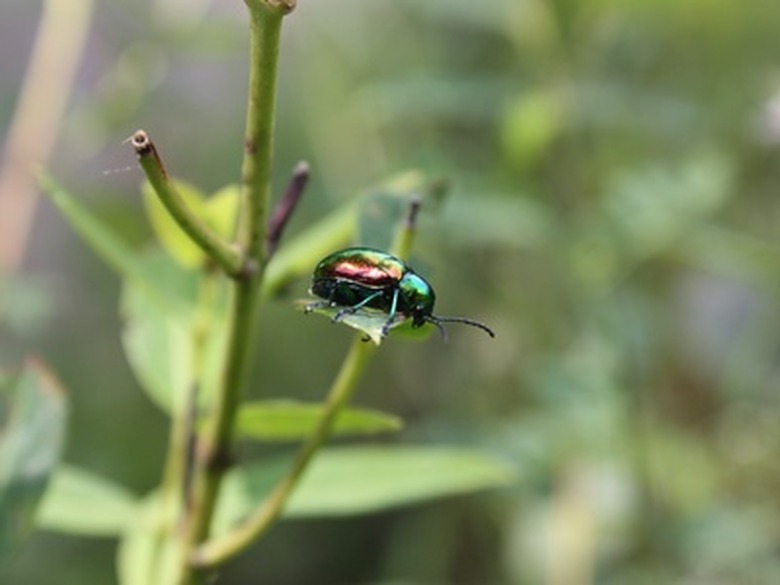How To Naturally Get Rid Of Japanese Beetles On Trees
Things Needed
- Neem oil spray
- Bucket
- Milk jug
- Soap
- Water
- Yeast
- Sugar
- Banana
- Poisonous plants
Its bright, metallic green exoskeleton makes the Japanese beetle easy to spot. Unfortunately, so do the alarmingly large numbers that can populate a tree. Japanese beetles attract more Japanese beetles, and if you don't get rid of them promptly they will soon take over. But that's no reason to pull out the chemical spray. It is relatively easy to control Japanese beetle populations naturally.
Step 1
Remove Japanese beetles by hand. The best time to take on this job is early in the morning when the beetles are lethargic and their wings are weighed down with dew. Spread a white sheet underneath the tree (for better visibility), then shake the beetles out of the trees. Deposit any fallen beetles into a bucket filled with soapy water. Japanese beetles are very poor swimmers.
- Its bright, metallic green exoskeleton makes the Japanese beetle easy to spot.
- The best time to take on this job is early in the morning when the beetles are lethargic and their wings are weighed down with dew.
Step 2
Spray your trees with a pesticide derived from a natural source. Neem oil sprays make your tree's leaves unpalatable for Japanese beetles and other leaf-feeding insects. For these sprays to be effective, all or most of your tree's leaves must be evenly and completely coated just before the point of runoff. Spray applications must be repeated frequently (as prescribed by the manufacturer) as the neem oil only persists for a few days.
Step 3
Build natural bait traps to lure Japanese beetles away from your tree and to their death. Mix 1 cup of water and 1 package of yeast. Then add 1/4 cup of sugar and a mashed banana and mix well. Pour the mixture into a milk jug, then leave the jug outside with the cap off. The Japanese beetles will be attracted by the nutritious mash and when they crawl in the mouth of the jug they will not be able to get back out.
- Spray your trees with a pesticide derived from a natural source.
- Neem oil sprays make your tree's leaves unpalatable for Japanese beetles and other leaf-feeding insects.
Step 4
Plant plants that will attract and then poison Japanese beetles. Four o' clocks, larkspur, white geraniums, castor beans, evening primrose, African marigold, knotweed, soybeans, white roses and buckeyes are among a fairly wide variety or plants that poison feeding Japanese beetles. But take care–some of these plants are poisonous to people, too.
Tip
Do a little research before you plant any new trees or plants in the area. Certain species are highly attractive to Japanese beetles.
